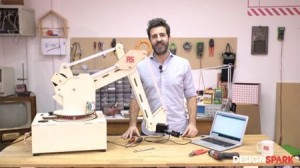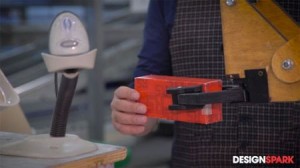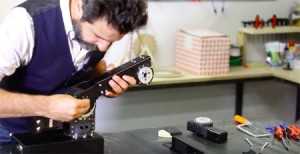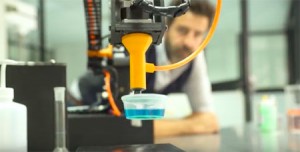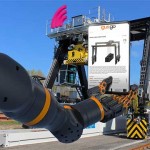Robotic solutions now open to everyone
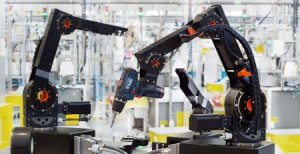 Robotic solutions are no longer the domain of the large multinational. Any firm, college or organisation can now access their potential thanks to new learning initiatives and product bundles from RS Components (RS), the global distributor for engineers.
Robotic solutions are no longer the domain of the large multinational. Any firm, college or organisation can now access their potential thanks to new learning initiatives and product bundles from RS Components (RS), the global distributor for engineers.
With Industry 4.0, the so-called Smart Factory and the internet of things (IoT) currently occupying the limelight in the engineering world, it is easy to forget the substantial effect that previous ‘industrial revolutions’ have had on engineering and manufacturing.
Arguably, the advent of numerical control (NC) and – even more so – computer numerical control (CNC), brought about the biggest change in contemporary manufacturing operations, leading to the widespread adoption of automated and robotic solutions. Indeed, by linking computers with control solutions and the manufacturing ‘coal face’, companies now have easy access to the Big Data that is underpinning this latest round of industry buzzwords.
It is hard to imagine any production line or laboratory not having some form of automation in their midst, but robotics have not quite had the same level of saturation, primarily due to the ease at which simple, cost-effective solutions can be developed and deployed. But this is set to change, thanks to a new initiative from RS.
Underpinning the new initiative is a selection of tutorials hosted within the DesignSpark section of the RS website, which take visitors through all the steps necessary to build a fully working and programmable robotic arm. Part one shows the user how they can deploy open-source resources and controllers to develop a robotic arm capable of being used in sophisticated industrial automation applications.
By selecting an open source design and associated code from Ruc Fablab (http://www.ruc.dk/fablab) and combining it with an Arduino-based PLC from Industrial Shields, Massimo Temporelli, President and co-Founder of The Fablab demonstrates in a video how the first steps can be taken on the road to a fully featured robotic solution. The tutorial page also includes numerous design file downloads and lists all the other components used in the build, including the servo motors, the power supply and the wiring – all of which are available from RS.
In part two, Massimo takes the robot to a real industrial environment to demonstrate its capabilities and potential for real-world industrial applications.
Part three takes the concept even further with the deployment of an Igus Robolink D industrial mechanical arm. Using the same open-source processor Massimo develops an even more capable solution, backed by the capabilities of the Igus components, which are based on existing industry-proven hardware and materials. Although the principle is the same, some of the components have changed from step one, but once again these are listed on the tutorial’s page. As before, a video is available to take the user through all the primary steps. The final episode of the DesignSpark tutorial, sees the finished robot in action in a cosmetics company where it is put into action handling fragile glass components.
In order to make the transition into a robot-equipped workplace, laboratory or classroom even easier, RS has created new robotic ‘bundles’, each of which comprise the parts required to build an Igus Robolink D robotic arm – one with a 1 kg capacity and another with a 4 kg capacity and longer reach.
The kits include four articulated joints, ready assembled with NEMA stepper motors; two pressed-steel connection arms; a connecting component for the base motor to the arm; a robot base unit with Harting connectors and an assembly kit, which contains mechanical and electrical and assembly componentry, fixtures and fittings.
By using popular industrial formats for the connectors, users have an incredible freedom of choice regarding onwards connectivity and integration with wider systems. Indeed, every single part needed to create a complete robotic system is available from RS. Users can also develop the robots further beyond their kit form, by purchasing additional components from the Robolink D range.
Although robots were originally conceived to replace human workers. Most of their benefits now arise from the way they complement the human workforce. By undertaking repetitive and laborious manual tasks, robots free up their much more ‘costly’ human peers to undertake more value-adding work that makes better use of their time and capabilities. These new robotic bundles also offer an attractive entry point for any smaller establishment, which may operate on a lower budget and they will bring the efficiency and reliability of robotic solutions to a far wider audience. Not only will users benefit from the functional capabilities of robotic solutions, but the bundles also offers significant cost savings versus buying the individual parts separately.
Both robot variants will deliver up to four axes and four degrees of freedom and are ideal for use in applications including R&D departments, educational establishments, laboratories and small-/medium-sized industrial factories; anywhere where a reliable, precise, affordable and flexible collaborative bench robotic arm is needed.
Visit the RS Components website for more information
See all stories for RS components


